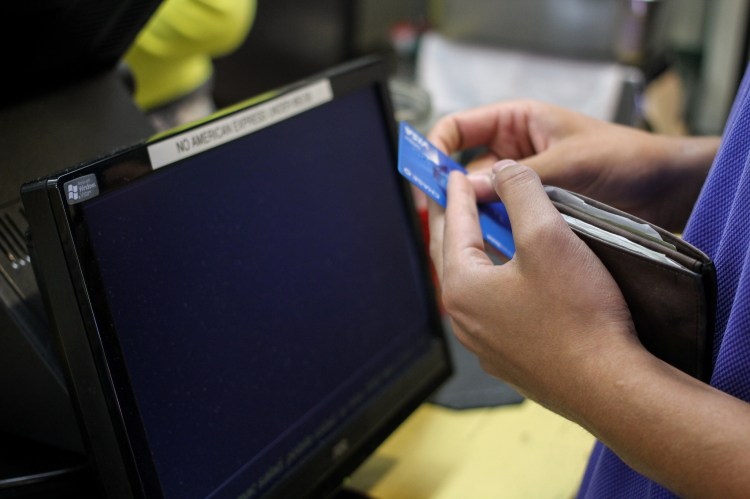Nearly 60 percent of consumer loyalty memberships go inactive each year, with meaningful rewards on the line too — about $15 billion annually. But with the exception of an occasional coupon fanatic, consumers are creatures of habit and hate hassle, even if they love free stuff. Swiping a plastic loyalty card, typing in a phone number, or stuffing wallets with paper punch cards proves onerous and easy to quit.
The parallels are hard to ignore in a rapidly evolving debate on the future of mobile payments. On the one hand, lies a massive graveyard of would-be next-gen payment champions — with Google Wallet the flagship tombstone — that couldn’t make their solutions easier than or as ubiquitous as the trusty old credit card.
Consumers refused to change the way they paid. On the other hand is Apple Pay, the first “zero-swipe” payment solution. While ubiquity remains to be seen, user adoption is already impressive, with over a million cards registered in the first three days. It’s no surprise with a magically quick checkout experience — Apple has finally delivered on the dream of an easier way to pay.
Merchants, too, should love a simpler form of checkout. For many businesses, faster throughput translates into real revenue.
Kroger supermarkets, for instance, benefited from a 10 percent earnings lift following the launch of its QueVision technology that shrunk checkout lines by a factor of eight. Yet, news emerged last week that Rite-Aid and CVS are blocking Apple Pay (and all NFC payments) in their stores, and a consortium of merchants called MCX has proffered their own, far bulkier mobile payment solution. (Side note: When will QR codes finally die?)
On this site last week, former Google Wallet leaders asserted that Apple Pay’s lack of SKU-level data would be its downfall — a popular explanation for the motivations behind the drugstore Apple Pay blockade. And they were right in pointing out the countless hurdles Apple would have to overcome to patch that data hole — most notably, technically-messy point-of-sale integrations.
But this is the same fallacy that doomed Google Wallet in the first place. By prioritizing the “holy grail” of spending data over an effortless consumer experience — with user data, of course, core to Google’s business model — Google failed to deliver on the number one requirement for success. Paying by credit card isn’t that hard and is, in fact, quite rewarding, thanks to massive bank incentives. Consumers demand fewer steps at checkout, not more. And without consumer participation, the data argument is null and void. There is no data.
CurrentC — the MCX solution — seems doomed to repeat these same mistakes. What is perhaps most misleading about the “we need more and more data” argument is that exceptional personalization and retention marketing campaigns have thrived without so-called Level 3 data. Starbucks has one of the most widely successful loyalty (and payment) schemes in the country, yet it focuses rewards on visit frequency and customer lifetime value calculations, not whether you bought a Venti Mocha Frappuccino or simple house blend (black, of course).
According to customer retention expert Dunnhumby (creator of the original supermarket loyalty scheme), the key criteria are recency, frequency, and value.
In the end, Apple Pay certainly isn’t perfect. A quick trip to Walgreens — where you still have to hand a plastic loyalty card to the cashier or type the number into the terminal to get rewarded — makes that very clear. Not to mention the long string of receipt-paper coupons when you get “lucky.” But as a payment technology, this is the closest we’ve seen to a frictionless mobile payment experience, and consumers certainly won’t tolerate anything else.
More data is better than less data. But some data is better than no data — and that starts with people actually using the technology. Take note, MCX.
Zach Goldstein is the chief executive and founder of Thanx, which enables merchants to effortlessly identify, engage and retain their best customers without new hardware or point of sale integration. Eliminating traditional loyalty solutions, Thanx turns any credit or debit card (including those used through Apple Pay) into a multi-merchant reward card.


